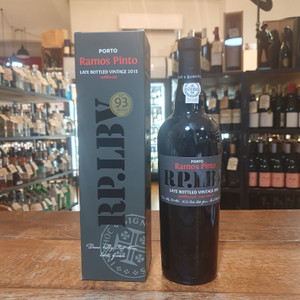Port
Port is one of the most overlooked and underrated styles of wine on the market. When produced by great houses, these wines can provide some of the most delicious drinking experiences possible.
Whether paired with dessert, mixed into a cocktail or sipped neat after dinner, the versatility of port wines knows no bounds, though understanding what the fortified wine is all about is key.
Where Port Is Made
Port wine is produced in Portugal’s Douro Valley, located in the northern part of the country. Most ports are red, although white and rosé versions exist. The main grape varieties used to produce port are touriga nacional, touriga franca, tinta roriz (tempranillo), tinta barroca and tinta cão. More than 50 varieties are permitted in port vinification, though these five are by far the most commonly used.
How Port Is Made
There are a handful of styles in which port wines are produced, bottled and labeled. These styles are mostly determined by how the wines are aged. However, the initial steps of vinification are the same for each.
Port wines are fortified, meaning that a neutral distillate is added during the vinification process. Post-harvest, grapes are crushed and fermented like any other wine. However, prior to the completion of fermentation, port producers add a neutral spirit to the wine. This addition of alcohol kills the remaining yeast and leaves residual sugar in the juice. The wines’ alcohol content is also boosted to about 19% to 20% due to the addition of the distillate.
The neutral spirit in port also acts as a natural preservative, meaning that the wines have a longer shelf life post-opening than do standard wines. No need to rush to finish a bottle; simply pop, enjoy a pour and let the bottle hang out in your refrigerator for a few weeks, which is fortunate, since port is often enjoyed just one small glass at a time.
Main Styles
There are several styles of port produced in Portugal. However, these styles can be generally lumped into two main categories: ruby and tawny. Ruby ports are aged in the bottle, whereas tawny ports are aged in wooden barrels, which creates an oxidative environment, meaning that oxygen comes in contact with the wine. This oxidative aging process causes the wines to lose pigment, have lower levels of tannins and take on nutty, caramel flavours.
Ruby: These ports are brightly hued, full-bodied and very fruit-forward on the palate. Notes of plums, cassis and overripe berries are most common. Post-fermentation, ruby ports are aged in concrete or stainless steel tanks, which don’t permit the oxidative aging process that wooden barrels do and help preserve the wine’s fruit-forward flavors. These are generally the most widely produced and least-expensive bottles of port on the market. Ruby ports are also produced in reserve, single-vintage (with a minimum of two or three years of aging), late-bottled vintage (minimum four to six years of aging) and rosé formats.
Tawny: This style of port is nutty, oak-aged and lighter-bodied in style than its ruby counterpart. These golden-hued wines are also produced in reserve, single-vintage and “aged” bottles; the aged style gives as its age the average age of the vintages that go into the blend and is labeled most commonly in increments of 10 (you’re most likely to see 10-, 20-, 30- and 40-year bottles). Tawny ports generally show flavors of hazelnuts, butterscotch, brioche, candied almonds and dried fruits.
Colheita: Single-vintage tawny ports are referred to as colheita ports. These wines are aged for at least seven years, with the exact vintage stated on the bottle. Colheita bottlings are not to be confused with aged ports, which give an average age of the blend within.
White: Although much less common than the other styles, white ports can be found in the United States with a bit of effort. These wines are produced from a variety of grapes, including malvasia fina and codega. Unlike their ruby and tawny counterparts, white ports generally are at their best when used in cocktail creations or mixed with tonic rather than consumed neat.













